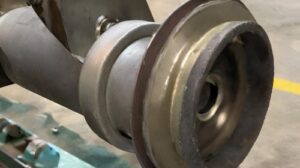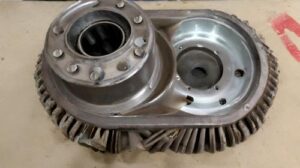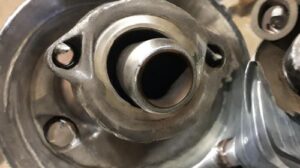Table of Contents
- Is a Welded Diff Illegal?
- What Is a Welded Differential?
- How Does a Welded Differential Work?
- The Legal Aspect
- Street Legality
- Motorsport and Off-Roading
- Drifting
- Conclusion
- FAQs about – is a welded diff illegal
- Is welding a differential reversible?
- Are there any alternatives to a welded diff for improving traction?
- Can I weld my differential, or should I seek professional help?
- Are there any benefits to having an open differential on a daily driver?
- Are there any specific safety precautions to take when driving with a welded diff?
In the world of automotive enthusiasts and racers, one term that often crops up in discussions is welded diff. But what exactly does it mean, and perhaps more importantly, is it legal?
In this article, we will delve into the world of welded differentials, discussing what they are, how they work, and their legal implications. So, fasten your seatbelts as we explore the intriguing question: Is a welded diff illegal?
Is a Welded Diff Illegal?
In most places, yes. A welded diff is usually illegal on regular roads because it can make driving unsafe. It’s mainly used in motorsports or off-roading for better traction.
What Is a Welded Differential?
A welded differential, often referred to as a welded differential, is a modification made to a vehicle’s differential. To comprehend this concept fully, let’s start by breaking down what a differential is in the first place.
The Differential Explained
A differential is a component found in all vehicles with more than two wheels. It’s a mechanism that allows the wheels on the same axle to rotate at different speeds. This is crucial because when you turn your vehicle, the outer wheel travels a longer distance than the inner wheel. Without a differential, turning would be incredibly challenging, and your tires would experience excessive wear and tear.
How Does a Welded Differential Work?
A welded differential involves precisely what the name suggests – welding the gears in the differential together, essentially locking them. This modification eliminates the ability of the wheels to rotate at different speeds. Both wheels on the same axle are forced to spin at the same rate, which can have a significant impact on the vehicle’s performance.
The Impact on Traction
One of the primary reasons enthusiasts opt for a welded diff is to improve traction, especially in motorsports such as drifting. With both wheels locked together, there’s less likelihood of one wheel losing grip while the other maintains it. This can make it easier to maintain controlled slides and drifts.
Drawbacks of a Welded Diff
While improved traction is a clear advantage, a welded diff has its drawbacks. The most notable one is the impact on steering and handling. Since the wheels can’t rotate independently, making tight turns becomes challenging, often resulting in a wider turning radius.
The Legal Aspect
Now that we understand what a welded differential is and how it functions, let’s address the crucial question: Is it legal?
Street Legality
In most regions, driving a vehicle with a welded diff on public roads is illegal. This is primarily due to the adverse effects it has on handling and safety. The inability to make tight turns smoothly can lead to accidents and pose a hazard to other road users.
Motorsport and Off-Roading
Where a welded diff finds its place is in controlled environments such as motorsport and off-roading. In these scenarios, the advantages of improved traction often outweigh the drawbacks in terms of maneuverability.
Drifting
Drifting is one of the motorsports where a welded diff is commonly used. It allows drivers to maintain controlled slides and execute impressive drift maneuvers with ease.
Off-Roading
Off-road enthusiasts may also choose to weld their differentials to enhance traction when traversing challenging terrain. However, it’s crucial to note that even in these situations, there may be regulations and restrictions in place depending on the specific event or location.
video by Car Throttle
Conclusion
In conclusion, a welded differential can be a valuable modification for particular automotive enthusiasts, particularly in motorsport and off-roading contexts. However, its legality on public roads is a gray area in most regions due to safety concerns. Before considering this modification, it’s essential to research and understand the laws and regulations in your area.
If you’re passionate about cars and driving, it’s vital to strike a balance between enhancing performance and ensuring safety on the road.



